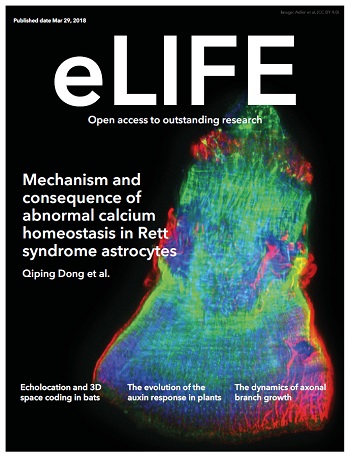Fine-scale tracking reveals visual field use for predator detection and escape in collective foraging of pigeon flocks
IF 6.4
1区 生物学
Q1 BIOLOGY
引用次数: 0
Abstract
During collective vigilance, it is commonly assumed that individual animals compromise their feeding time to be vigilant against predators, benefiting the entire group. One notable issue with this assumption concerns the unclear nature of predator ‘detection’, particularly in terms of vision. It remains uncertain how a vigilant individual utilizes its high-acuity vision (such as the fovea) to detect a predator cue and subsequently guide individual and collective escape responses. Using fine-scale motion-capture technologies, we tracked the head and body orientations of pigeons (hence reconstructed their visual fields and foveal projections) foraging in a flock during simulated predator attacks. Pigeons used their fovea to inspect predator cues. Earlier foveation on a predator cue was linked to preceding behaviors related to vigilance and feeding, such as head-up or down positions, head-scanning, and food-pecking. Moreover, earlier foveation predicted earlier evasion flights at both the individual and collective levels. However, we also found that relatively long delay between their foveation and escape responses in individuals obscured the relationship between these two responses. While our results largely support the existing assumptions about vigilance, they also underscore the importance of considering vision and addressing the disparity between detection and escape responses in future research.精细跟踪揭示了鸽群集体觅食时利用视野探测和逃避捕食者的情况
一般认为,在集体警戒期间,动物个体会牺牲自己的进食时间来警惕捕食者,从而使整个群体受益。这一假设的一个显著问题是捕食者 "侦测 "的性质不明确,特别是在视觉方面。警惕性高的个体如何利用其高敏锐度视觉(如眼窝)来探测捕食者的提示,并随后指导个体和集体的逃逸反应,这一点仍不确定。利用精细的运动捕捉技术,我们跟踪了模拟捕食者攻击时鸽群中觅食的鸽子的头部和身体方向(从而重建了它们的视野和眼窝投影)。鸽子用它们的眼窝来检查捕食者的线索。鸽子较早出现捕食者线索上的眼窝与之前的警惕和觅食行为有关,如抬头或低头姿势、头部扫描和啄食。此外,在个体和集体水平上,较早的注视都预示着较早的逃避飞行。然而,我们也发现,个体的视线和逃避反应之间相对较长的延迟掩盖了这两种反应之间的关系。我们的研究结果在很大程度上支持了现有的警觉性假设,但同时也强调了在未来的研究中考虑视觉和解决探测与逃避反应之间差异的重要性。
本文章由计算机程序翻译,如有差异,请以英文原文为准。
求助全文
约1分钟内获得全文
求助全文
来源期刊

eLife
BIOLOGY-
CiteScore
12.90
自引率
3.90%
发文量
3122
审稿时长
17 weeks
期刊介绍:
eLife is a distinguished, not-for-profit, peer-reviewed open access scientific journal that specializes in the fields of biomedical and life sciences. eLife is known for its selective publication process, which includes a variety of article types such as:
Research Articles: Detailed reports of original research findings.
Short Reports: Concise presentations of significant findings that do not warrant a full-length research article.
Tools and Resources: Descriptions of new tools, technologies, or resources that facilitate scientific research.
Research Advances: Brief reports on significant scientific advancements that have immediate implications for the field.
Scientific Correspondence: Short communications that comment on or provide additional information related to published articles.
Review Articles: Comprehensive overviews of a specific topic or field within the life sciences.
 求助内容:
求助内容: 应助结果提醒方式:
应助结果提醒方式:


